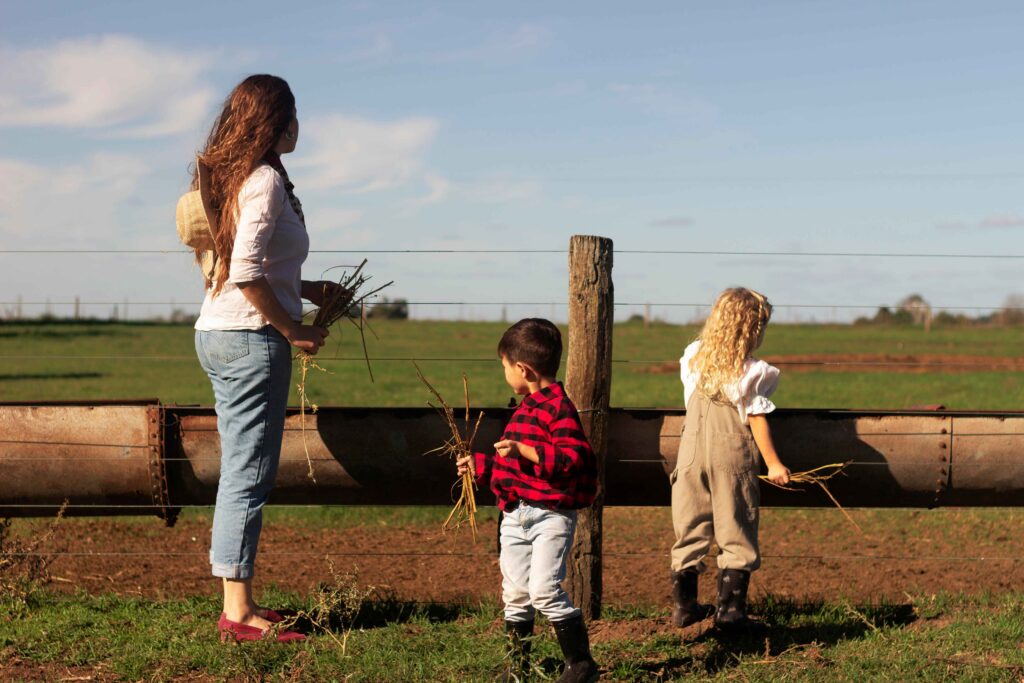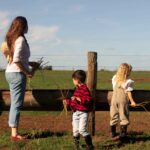Growing up on a farm can be one of the most rewarding experiences for children. They learn about responsibility, hard work, and the beauty of nature. However, this unique lifestyle also comes with significant safety risks that can be particularly dangerous for kids. At Erie Mutual Insurance, we understand the importance of protecting our youngest family members and want to highlight ways to keep them safe.
The Reality of Child Safety on Farms
Unfortunately, the statistics surrounding child safety on farms can be quite alarming. Recent headlines from Ontario reveal some tragic incidents:
- “17-year-old killed in Southwestern Ontario farm incident”
- “A 3-year-old sent to hospital after a farming accident”
- “Young child dies in farming accident in Kawartha Lakes: OPP”
These incidents remind us of the serious dangers that exist in agricultural settings. While farming offers invaluable life lessons, it’s crucial to prioritize safety to prevent such tragedies.
Understanding the Statistics
To effectively tackle safety concerns, we need to look at the statistics:
- Child injuries on Ontario farms tend to peak during the summer months when kids are more likely to be active on the farm (1).
- The most common injuries include open wounds to the head and face (17.1%) and fractures to the upper extremities (14.9%) (1).
- Bystander runovers, drownings, and extra rider incidents are the leading causes of fatalities among very young children (2).
- Shockingly, 40.4% of runover incidents involving preschoolers can be fatal (2).
- While preschoolers make up just 5.4% of the Canadian farm population, they account for a staggering 46.4% of agricultural fatalities (2, 2001).
These numbers underscore the urgent need for comprehensive safety measures on farms.
Strategies for Preventing Childhood Accidents
1. Preventing Bystander Run-Over Accidents
Bystander run-overs are among the most preventable tragedies on farms. Here are some key strategies to reduce this risk:
- No Extra Riders: Always prohibit additional riders on tractors and other machinery. This helps prevent accidents.
- Safe Boarding: Never allow anyone to get on or off equipment while it’s moving. Always stop completely first.
- Be Aware: Before moving any equipment, take a moment to check all directions. Visibility is crucial.
- Slow Down: Reduce speed in areas where children might be present. It gives you more time to react to unexpected situations.
- Designated Play Areas: Create safe zones for children to play, away from working machinery and animals.
- Supervision: Always keep a close eye on children while they’re on the farm. It’s vital to ensure their safety.
- Teach Safety: Start educating kids about basic farm safety principles early on. This knowledge empowers them to stay safe.
2. Preventing Drownings on Farm Property
Water hazards can be significant dangers, especially for young children. Here’s how to prevent drownings:
- Fencing: Install fences around ponds and streams to limit access.
- Swimming Lessons: Enroll kids in swimming classes to help them learn essential water skills.
- Life Jackets: Make it a rule for kids to wear life jackets whenever they are near water. It’s a small precaution that can save lives.
- Clear Boundaries: Teach children about areas that are off-limits and post visible signs to reinforce these rules.
- Always Supervise: Never leave kids unattended near water, regardless of how calm it may seem.
3. Preventing Falls from Heights
Falls are a common cause of injuries on farms. To help prevent these accidents, consider these strategies:
- Guardrails and Barriers: Install guardrails in high-risk areas to prevent falls.
- Limit Access: Restrict access to upper levels and ladders where children could easily fall.
- Regular Maintenance: Keep all upper levels well-maintained and secure.
- Climbing Safety: Educate kids about which areas are unsafe for climbing and why.
- Proper Footwear: Ensure that everyone, especially children, wears appropriate footwear on the farm to minimize slip hazards.
Educating Children About Farm Hazards
Understanding the dangers on a farm is crucial for children’s safety. Here are some effective ways to educate them:
- Hands-On Learning: Engage children in hands-on demonstrations of safe practices. Show them how to avoid risks.
- Visible Signage: Post large, clear signs to indicate hazards. Place them at eye level for kids to see easily.
- Continuous Education: Make safety a regular part of farm life. The more informed children are, the safer they’ll be.
- Encourage Questions: Create an open environment where kids feel comfortable asking about safety.
- Peer Mentoring: As children grow older, encourage them to mentor younger siblings or peers, fostering a culture of safety on the farm.
The Role of Insurance in Farm Safety
While we can take numerous precautions, accidents can still happen. This is where insurance comes into play. Erie Mutual Insurance is dedicated to supporting farm families with tailored insurance solutions that address their unique needs.
Comprehensive Coverage
Farm insurance includes various coverage options, such as:
- Liability Coverage: Protects against claims related to injuries or accidents on your property, including those involving children.
- Property Coverage: Safeguards your physical assets, ensuring you can recover from losses.
- Crop Insurance: Provides financial protection against crop failures, allowing you to maintain stability in your operations.
Risk Management Support
Insurance providers, like Erie Mutual, often offer additional resources to help farm families improve safety practices:
- Safety Audits: Some insurers provide safety audits to identify potential hazards and recommend solutions.
- Educational Resources: Access training materials and workshops that focus on farm safety best practices.
- Emergency Planning: Help develop emergency response plans so that everyone knows what to do in case of an accident.
Building a Culture of Safety
Creating a safe environment for children on the farm requires commitment from everyone involved. Here are some ways to foster a culture of safety:
- Lead by Example: Adults should model safe behaviors. Children learn by watching, so demonstrating safety practices is crucial.
- Incorporate Safety into Daily Routines: Make safety a regular topic of discussion. Whether during meals or family gatherings, prioritize conversations about safety.
- Community Engagement: Connect with other farm families to share safety practices and experiences. A collective approach can enhance awareness and responsibility.
- Celebrate Safety Achievements: Recognize and celebrate milestones in safety, such as completing safety training or implementing new measures. This encourages everyone to stay vigilant.
Conclusion
Child safety on farms is a pressing concern that demands continuous attention and proactive measures. The statistics are concerning, but by implementing effective strategies, educating children, and prioritizing safety, we can create a secure environment for the youngest members of our farming communities.
At Erie Mutual Insurance, we are dedicated to not only providing insurance coverage but also promoting the safety and well-being of farm families throughout Southern Ontario, including Haldimand, Niagara, and Hamilton. Together, we can ensure that the next generation enjoys the enriching experiences of farm life while staying safe.








1 thought on “Keeping Children Safe on the Farm”